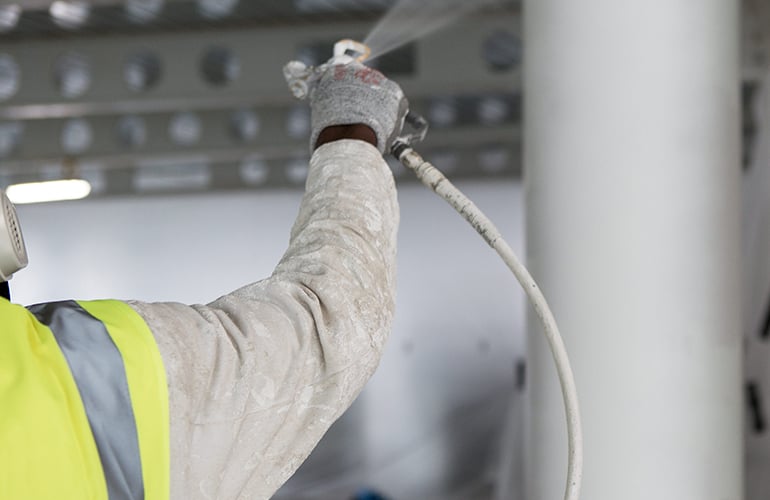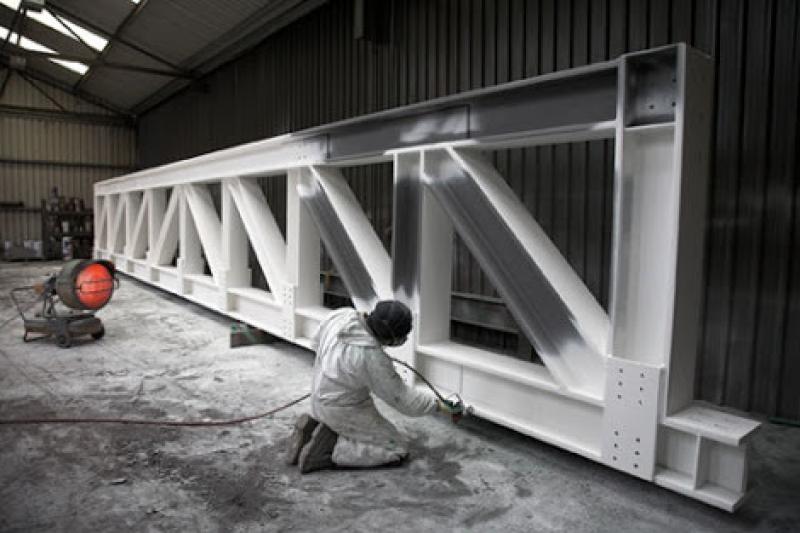Thermal coatings provide exceptional protection in high-temperature environments by creating heat-resistant barriers that reduce surface temperatures by 200-500°F while extending equipment lifespan by 3-5 times. These specialized coatings reflect radiant heat, insulate underlying surfaces, and maintain structural integrity under extreme thermal stress that would damage unprotected materials within hours or days.
The primary advantages of using expert intumescent coating installation include dramatic temperature reduction, corrosion resistance, energy savings through reduced cooling requirements, and protection of critical infrastructure components. Industries rely on thermal coatings to maintain operational efficiency in furnaces, exhaust systems, manufacturing equipment, and aerospace applications where conventional materials fail under sustained high-temperature exposure.
Types of Thermal Coatings for Extreme Heat Applications
Multiple thermal coating technologies address different high-temperature challenges and performance requirements. Each type offers specific advantages based on application temperature ranges, substrate materials, and environmental conditions.
| Coating Type | Maximum Temperature | Primary Benefit | Application Method | Typical Thickness |
|---|---|---|---|---|
| Ceramic Matrix Coatings | 2000°F (1093°C) | Superior thermal shock resistance | Plasma spray | 0.008-0.020 inches |
| Refractory Coatings | 3000°F (1649°C) | Extreme temperature tolerance | Brush/spray application | 0.020-0.125 inches |
| Reflective Coatings | 1200°F (649°C) | High emissivity and reflectance | Spray application | 0.003-0.010 inches |
| Ablative Coatings | 4000°F (2204°C) | Sacrificial heat absorption | Trowel/spray application | 0.125-0.500 inches |
| Intumescent Coatings | 1800°F (982°C) | Expanding fire protection | Brush/roller application | 0.010-0.050 inches |
Ceramic matrix coatings excel in thermal cycling applications where rapid temperature changes occur. These coatings maintain adhesion and structural integrity through repeated heating and cooling cycles that crack conventional protective materials.
Refractory coatings handle the highest sustained temperatures and resist chemical attack from combustion byproducts. Industrial furnaces, kilns, and petrochemical processing equipment rely on these coatings for continuous high-temperature operation.
Bonus Tip: Match coating thermal expansion coefficients to substrate materials. Mismatched expansion rates cause coating failure during temperature cycling.
Performance Benefits in High-Temperature Environments
Thermal coatings deliver measurable improvements in equipment performance, operational costs, and maintenance requirements. Temperature reduction represents the most significant advantage, with properly applied coatings reducing surface temperatures by 40-70% compared to unprotected surfaces.
Technical Performance Data:
| Performance Metric | Unprotected Surface | With Thermal Coating | Improvement |
|---|---|---|---|
| Surface Temperature | 1500°F (816°C) | 750°F (399°C) | 50% reduction |
| Heat Transfer Rate | 100% baseline | 25-40% of baseline | 60-75% reduction |
| Equipment Lifespan | 2-3 years | 8-12 years | 300-400% increase |
| Energy Consumption | 100% baseline | 85-90% of baseline | 10-15% savings |
| Maintenance Frequency | Monthly | Annually | 90% reduction |
Energy efficiency improvements result from reduced cooling requirements and improved thermal management. Manufacturing facilities report 10-25% reductions in cooling costs after applying thermal coatings to high-temperature equipment and structures.
Corrosion protection extends equipment life significantly in harsh environments. High temperatures accelerate oxidation and chemical degradation of metal surfaces. Thermal coatings create protective barriers that prevent direct contact between substrates and corrosive atmospheres.
Market Data: The global thermal coatings market reached $8.9 billion in 2024, with industrial applications driving 60% of demand due to energy efficiency requirements and equipment protection needs.
Maintenance cost reductions stem from decreased thermal stress on protected components. Equipment operating within design temperature ranges experiences fewer failures, requires less frequent repairs, and maintains consistent performance over extended periods.
Application Methods and Surface Preparation
Professional thermal coating contractor provides surface preparation and appropriate application techniques. Surface preparation accounts for 70-80% of coating performance and longevity in high-temperature environments.
Substrate cleaning removes oils, scale, and contaminants that prevent proper coating adhesion. Abrasive blasting creates surface profiles necessary for mechanical bonding. Surface roughness specifications vary by coating type but typically range from 125-250 microinches Ra.
Application Method Comparison:
| Method | Coverage Rate | Equipment Cost | Coating Quality | Best Applications |
|---|---|---|---|---|
| Plasma Spray | 10-50 sq ft/hour | $150,000-$500,000 | Excellent | Precision components |
| HVOF Spray | 15-60 sq ft/hour | $200,000-$400,000 | Superior | Dense, wear-resistant coatings |
| Brush Application | 200-400 sq ft/hour | $50-$200 | Good | Large surface areas |
| Spray Application | 300-600 sq ft/hour | $500-$5,000 | Good to Excellent | General purpose coating |
Environmental conditions during application affect coating quality and curing characteristics. Temperature, humidity, and air movement must remain within specified ranges throughout the application and curing process.
Bonus Tip: Monitor substrate temperature during application. Surfaces too hot or cold prevent proper coating adhesion and may cause premature failure.
Quality control measures ensure consistent coating thickness and coverage. Professionals use wet film thickness gauges during application and dry film thickness measurements after curing to verify specification compliance.
Things to Consider Before Making a Decision
Several critical factors influence thermal coating selection and project success. Operating temperature ranges determine suitable coating types and application methods. Continuous high temperatures require different solutions than intermittent thermal cycling applications.
Substrate compatibility affects coating adhesion and long-term performance. Some coatings work well on steel but fail on aluminum or composite materials. Material compatibility testing prevents costly application failures and ensures optimal performance.
Budget considerations extend beyond initial coating costs to include surface preparation, application equipment, and long-term maintenance savings. High-performance coatings cost more initially but deliver superior return on investment through extended equipment life and reduced operating costs.
Industrial Data: Thermal coating projects typically require 3-6 month lead times for specialty applications, with material costs ranging from $15-$150 per square foot depending on coating type and application complexity.
Access limitations affect application methods and project scheduling. Confined spaces, elevated locations, and operating equipment constraints may require specialized application techniques or extended shutdown periods.
Professional expertise requirements vary significantly between coating types. Simple spray applications may suit qualified maintenance teams, while plasma spray coatings require certified specialists with extensive training and specialized equipment.
Common Questions About Thermal Coating Applications
Many facility managers wonder about coating durability under thermal cycling conditions. Quality thermal coatings withstand thousands of heating and cooling cycles when properly applied to compatible substrates with appropriate surface preparation.
Cost justification concerns often arise during project planning phases. Thermal coatings typically pay for themselves within 2-4 years through reduced energy costs, extended equipment life, and decreased maintenance requirements.
Bonus Tip: Calculate total cost of ownership including energy savings, maintenance reductions, and avoided equipment replacement costs. This analysis usually supports thermal coating investments.
Safety considerations during high-temperature coating applications require specialized procedures and equipment. Some application methods generate hazardous fumes or require inert atmospheres to prevent coating degradation.
Performance verification methods help ensure coating effectiveness after application. Infrared thermography, thermal imaging, and temperature monitoring confirm expected performance levels and identify potential problem areas.
Frequently Asked Questions
How long do thermal coatings last in high-temperature applications? Quality thermal coatings typically last 5-15 years depending on operating conditions, coating type, and maintenance practices. Continuous high-temperature exposure reduces lifespan compared to intermittent heating cycles.
Can thermal coatings be applied to existing equipment without shutdown? Most thermal coating applications require equipment shutdown for proper surface preparation and curing. Some spray-applied coatings allow partial operation during application, but full shutdown ensures optimal results.
What maintenance do thermal coatings require? Thermal coatings need periodic inspection for damage, wear, or delamination. Annual visual inspections and infrared thermography every 2-3 years help identify maintenance needs before coating failure occurs.
How do I select the right thermal coating for my application? Consider maximum operating temperature, thermal cycling frequency, substrate material, environmental conditions, and budget constraints. Professional consultation ensures appropriate coating selection for specific requirements.
Are thermal coatings environmentally safe? Most modern thermal coatings use environmentally compliant formulations without hazardous air pollutants. Some high-temperature applications may require specialized disposal procedures for worn coating materials.
Maximizing Thermal Coating Performance
Strategic thermal coating implementation delivers maximum benefits when integrated with comprehensive thermal management systems. Combining coatings with insulation, ventilation, and process optimization creates synergistic effects that exceed individual component performance.
Professional installation of thermal coating and quality control ensure coating systems meet performance specifications and provide expected service life. Certified applicators understand surface preparation requirements, application techniques, and quality verification methods essential for successful high-temperature coating projects.
Long-term success depends on regular monitoring and proactive maintenance. Thermal imaging surveys identify coating degradation before failure occurs, allowing planned maintenance that prevents costly equipment damage and unscheduled downtime. Investment in quality thermal coatings and professional application delivers measurable improvements in equipment performance, energy efficiency, and operational reliability for decades.
Author and Reviewer
Author: With over two decades of hands-on experience, Robert Lamothe, owner and lead installer of Lamothe Insulation, brings unparalleled expertise in spray foam insulation, carpentry, and building science. Since 2002, he has earned a reputation for precision, quality craftsmanship, and delivering energy-efficient solutions that stand the test of time. Lamothe Insulation is a family-owned and family-operated business, and Robert also owns the Goddard School of Auburn, an early childhood education school.
Reviewer: Ethan Taylor has 8 years of experience in spray foam insulation. He reviewed this content and suggested ways to simplify business outreach while keeping trust and professionalism intact.










